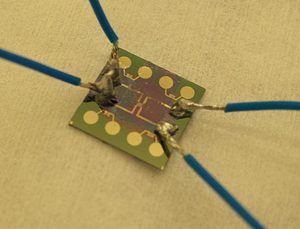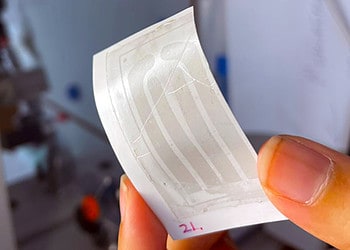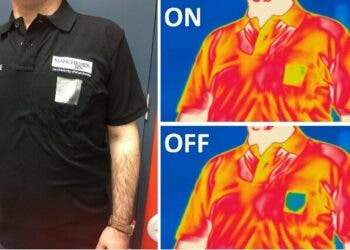
In the world of microelectronics, packing the most computing power you can squeeze in the smallest surface is the topmost priority. As powerful devices in term of computing become ever miniaturized, however, efficiently disposing of heat or keeping devices cool under a working temperature is one of the biggest challenges the industry is facing right now. Graphene, the wonder material we’ve praised on more than one occasion, but never really enough, seems to yet again provide a practical solution.
Researchers Chalmers University of Technology in Sweden showed that after a graphene layer was applied on chips, temperature in hotspots inside a processor were reduced by up to 25 percent.
“The normal working temperature in the hotspots we have cooled with a graphene layer has ranged from 55 to 115 degrees Celsius. We have been able to reduce this by up to 13 degrees, which not only improves energy efficiency, it also extends the working life of the electronics.”
Just to get an idea, in electronics a general rule of thumb says that if a devices runs under a temperature 10-degree Celsius hotter than its supposed to, its life cycle is halved. Ever wondered why some electronics malfunction more often than usual? Overheating is one of the dominant causes.
“This discovery opens the door to increased functionality and continues to push the boundaries when it comes to miniaturizing electronics,” said Chalmers Professor Johan Liu, who heads the international research project, in partnership with the Hong Kong University of Science and Technology, Shanghai University in China and Swedish company SHT Smart High Tech AB.
Greenhouse gas emissions could also be considerably reduced if electronics, even microelectronics actually, were better at keeping themselves cool. In a 2007 report, the Environmental Protection Agency estimated that U.S. servers and data centers consumed about 61 billion kilowatt-hours (kWh), accounting for 1.5 percent of total U.S. electricity consumption.
A bit on graphene. Graphene is a single atomic layer of sp2 bonded carbon atoms arranged into a honeycomb lattice. Graphite, commonly found in pencil leads, is comprised of millions of graphene sheets stacked together by weak van de Waals forces. Being only one atom thick, graphene is almost invisible, absorbing only about 2.3% of light. It conducts electricity as well as copper, conducts heat better than most materials and is stiffer and stronger than diamond but at the same time is flexible. Actually, It’s the world’s strongest material, even when it has flaws, a graphene aerogel is also the lightest material known, it’s great for sensors, for headphones, it repairs itself, it can be magnetic, and boasts a swarm of other features and capabilities. It’s better to ask what graphene CAN’T do.
The research, that has been undertaken in partnership with the Hong Kong University of Science and Technology, Shanghai University in China and Swedish company SHT Smart High Tech AB, has been published in the scientific publication Carbon (scientific paper).
via KurzweilAI / source: Chalmer Uni






